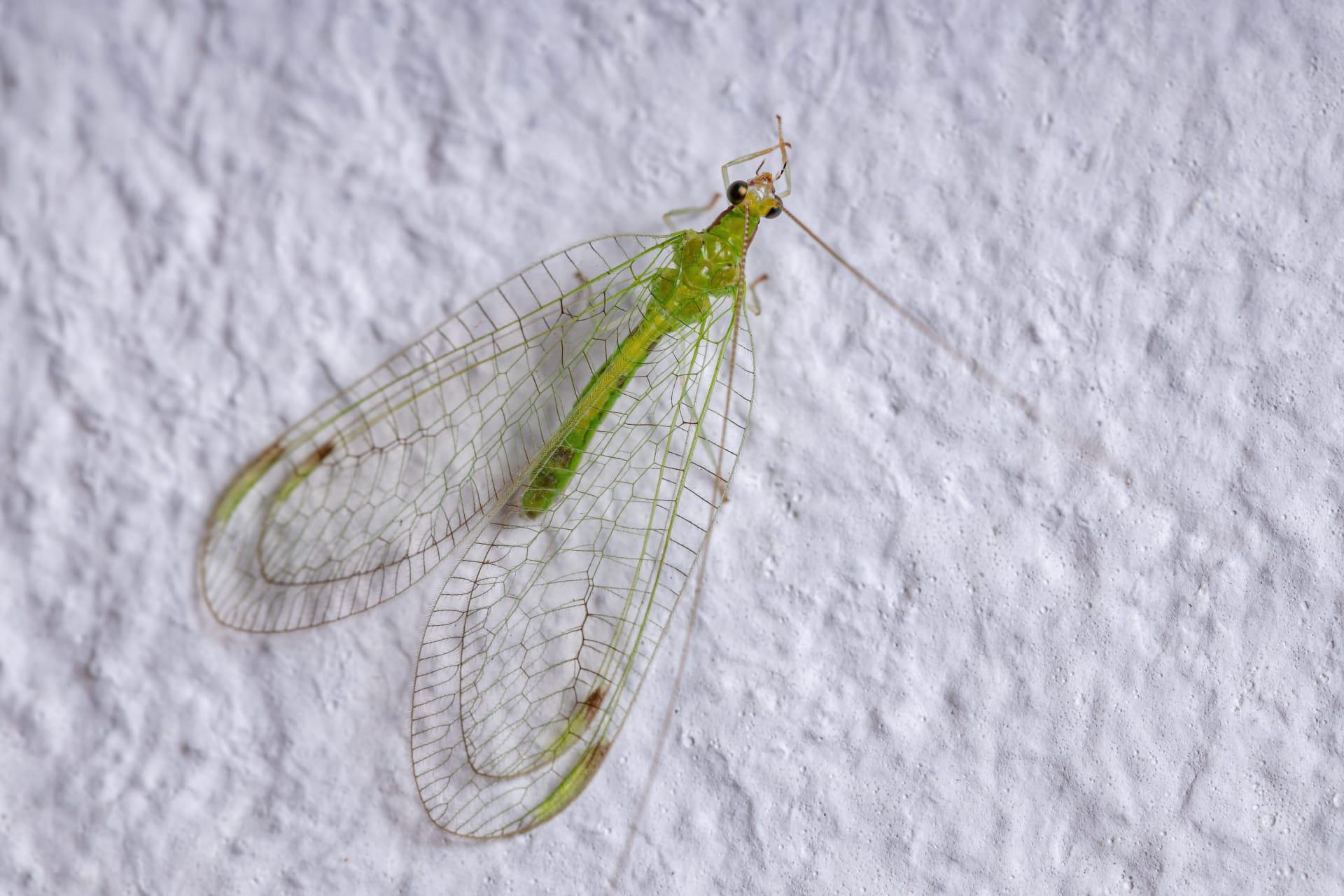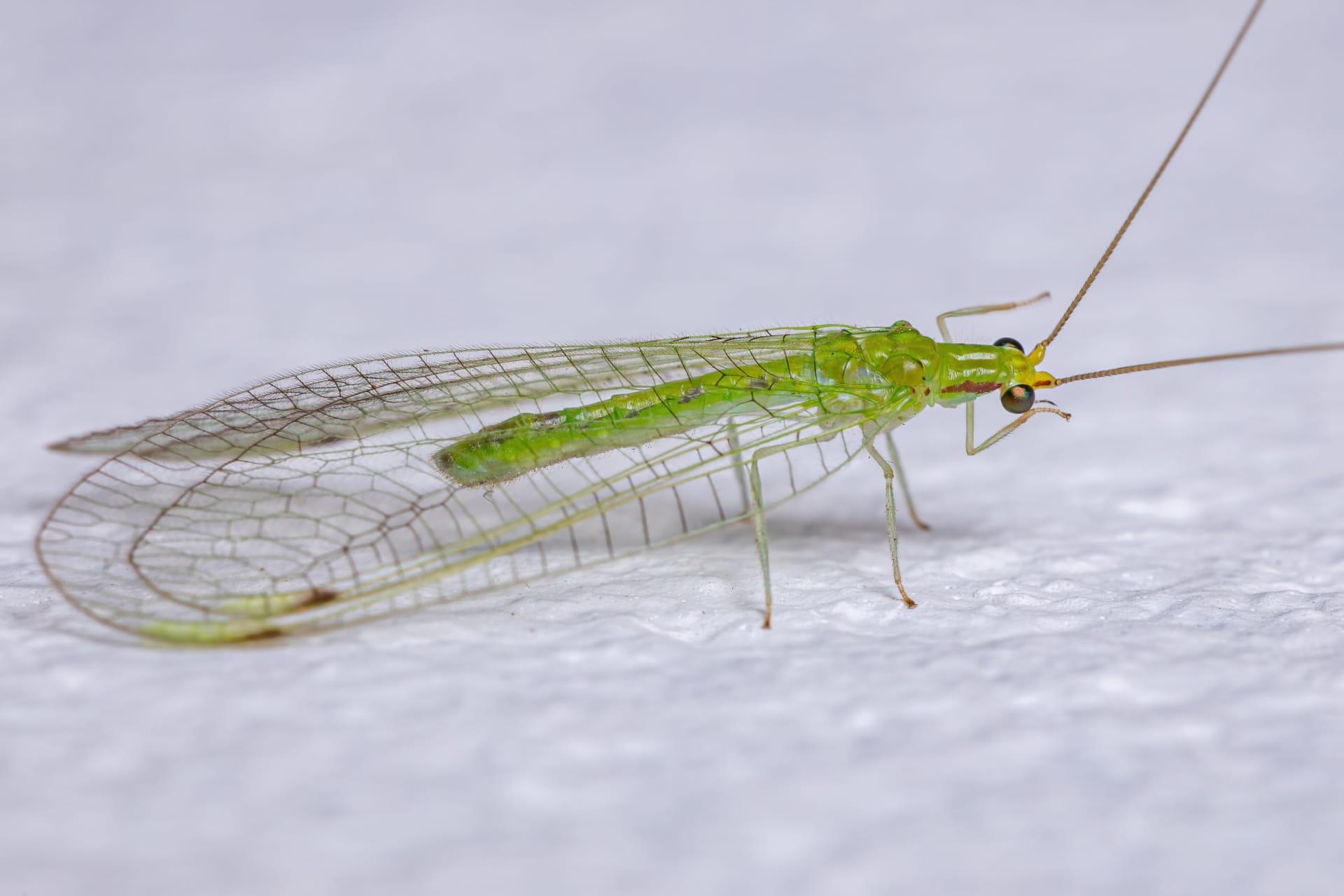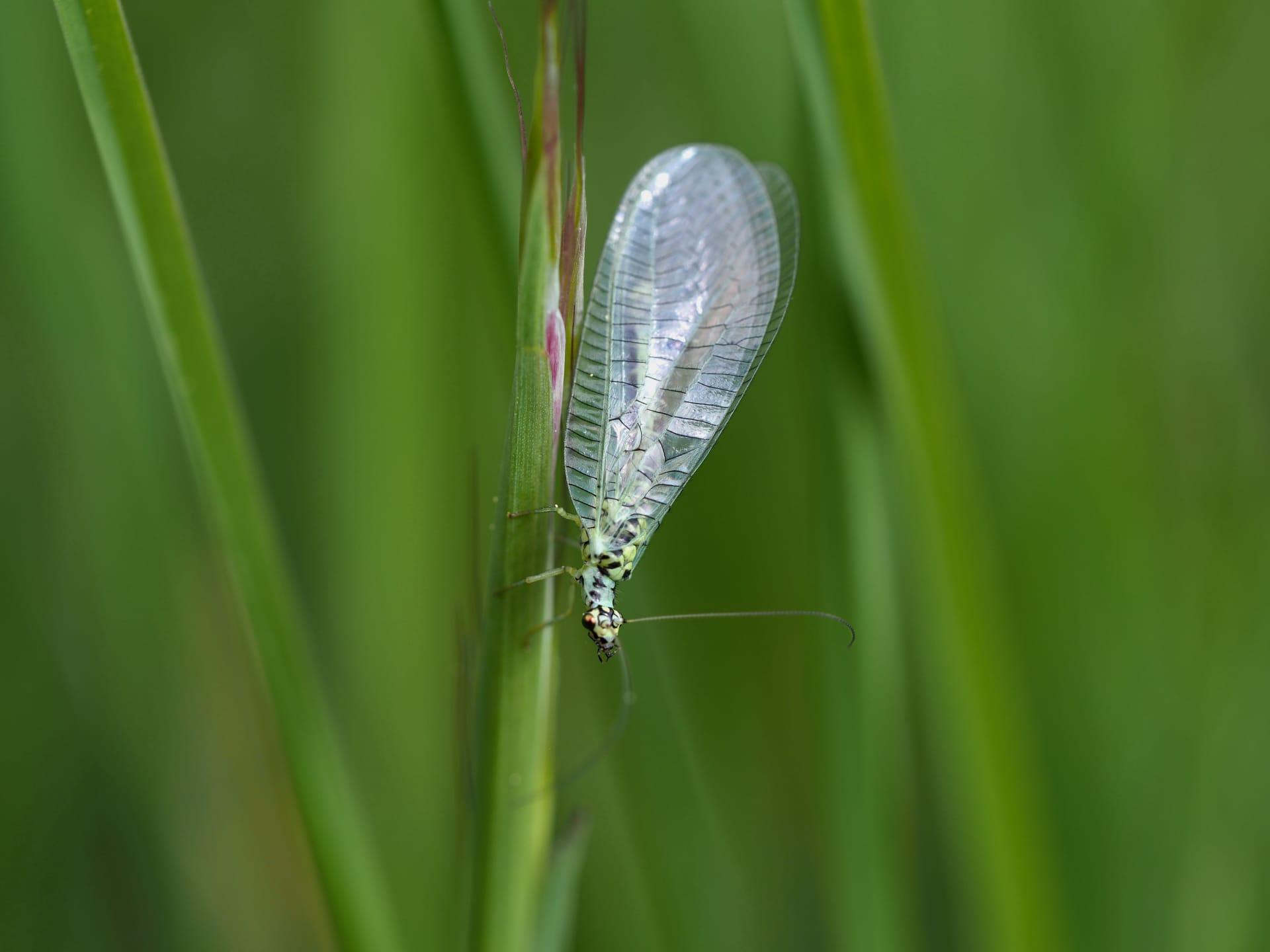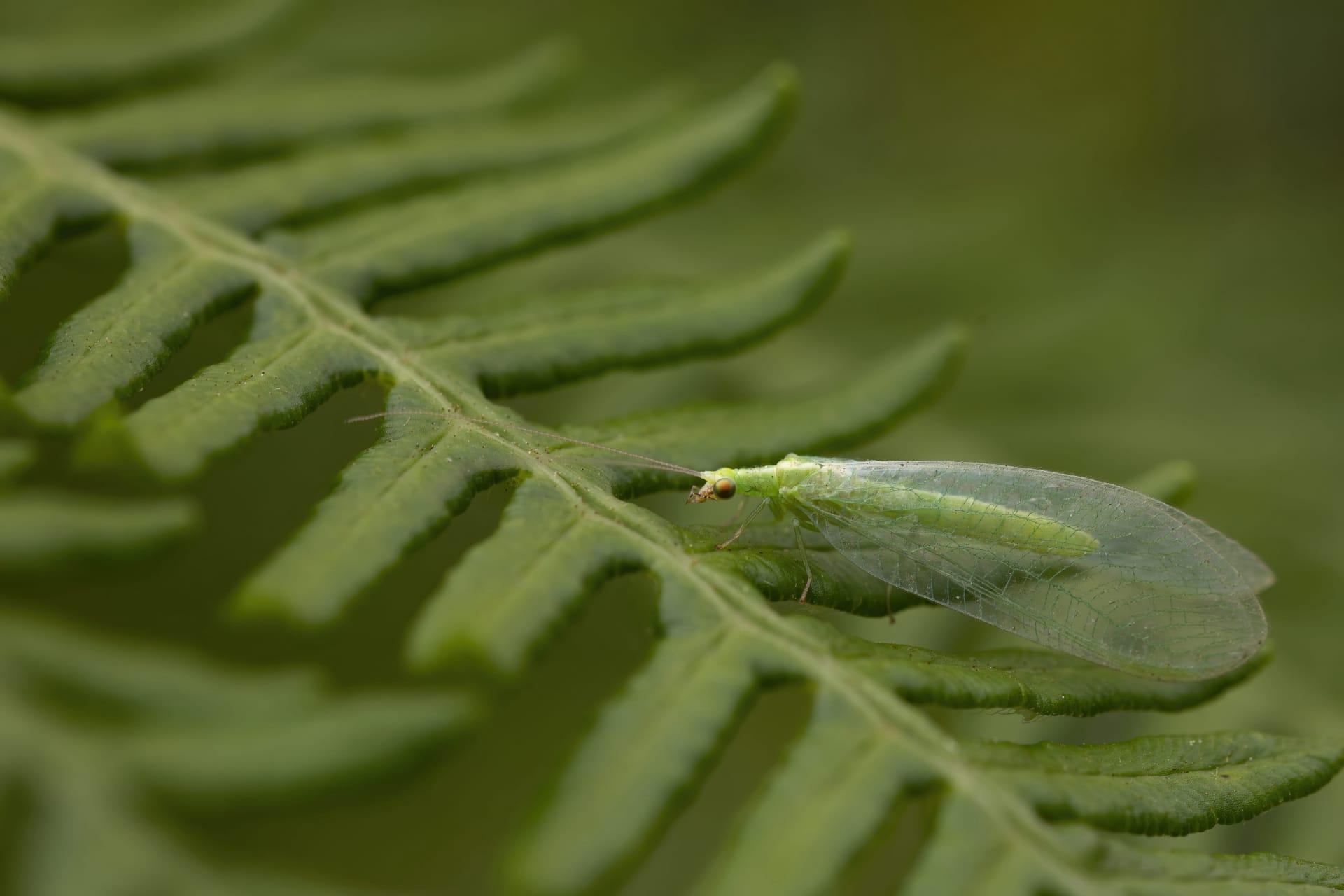1
Green Lacewings, scientifically known as Chrysopidae, are not just pretty faces in the insect world; they are fierce predators in their larval stage. A single lacewing larva can devour up to 200 aphids or other pest insects per week. These larvae have curved, sickle-shaped mandibles which they use to impale their prey, injecting enzymes that liquefy the insides of the aphid, which are then sucked out. This makes them invaluable allies in natural pest control.
Lacewing eggs are uniquely placed at the end of slender, hair-like stalks, about one centimeter long. This peculiar egg-laying habit is a survival strategy. It keeps the eggs safe from predators and from cannibalistic siblings upon hatching. The eggs are delicately balanced at the top of these stalks, giving them a whimsical appearance akin to tiny white balloons on a string.

2
Adult Green Lacewings are not only predators but also pollinators. Their diet changes as they mature, shifting from carnivorous larvae to nectar and pollen-eating adults. This dual role in the ecosystem enhances their importance, contributing to both pest control and pollination. It's a fascinating transformation from a voracious predator to a gentle pollinator.
Another remarkable aspect of Green Lacewings is their auditory abilities. They are one of the few insects that can hear ultrasonic calls of bats, their natural predators. Lacewings respond to these sounds by freezing in mid-air or diving to the ground, a survival technique that helps them evade being eaten. This ability reflects an intricate evolutionary adaptation for survival in a world full of predators.

3
Green Lacewings have a unique way of communicating through vibrations. They tap their abdomen on the surface of a leaf in a series of patterns to attract mates. This form of communication is so precise that different species of lacewings can be identified by their unique tapping patterns. It's a silent symphony played out in the insect world, unseen but vital for their reproduction.
During the larval stage, Green Lacewings exhibit a behavior known as "trash-carrying." Larvae cover themselves with debris, such as pieces of dead prey, plant material, and other environmental detritus. This bizarre behavior serves as camouflage, protecting them from predators and allowing them to ambush their prey more effectively. It's a natural example of a "wolf in sheep's clothing," where the predator hides in plain sight.

4
The life cycle of the Green Lacewing is a rapid one. From egg to adult, it typically spans about four weeks, depending on environmental conditions like temperature and humidity. This quick turnaround makes them efficient in controlling pests in a short amount of time. Their presence in gardens and farms is a boon for organic farming, reducing the need for chemical pesticides.
Interestingly, Green Lacewings exhibit a form of "crypsis," a method of blending into their surroundings to avoid detection. Adult lacewings are pale green with delicate, transparent wings that resemble leaves, helping them to blend in amongst foliage. This camouflage not only aids in avoiding predators but also assists them in sneaking up on their prey, making them effective hunters.

5
Green Lacewings are not just solitary hunters. In the presence of abundant food, they exhibit a form of group hunting. Larvae will converge on a dense population of aphids, creating a feeding frenzy. This group behavior maximizes their predatory efficiency and is a spectacle of nature's way of controlling pest populations.
Lacewings are also known for their gentle nature towards humans and other beneficial insects. They are harmless to people and pets, making them a welcomed guest in any garden. Moreover, they do not harm beneficial insects like bees and ladybugs, focusing their predatory instincts solely on pests. This selective predation helps maintain a healthy ecological balance in gardens and farms.